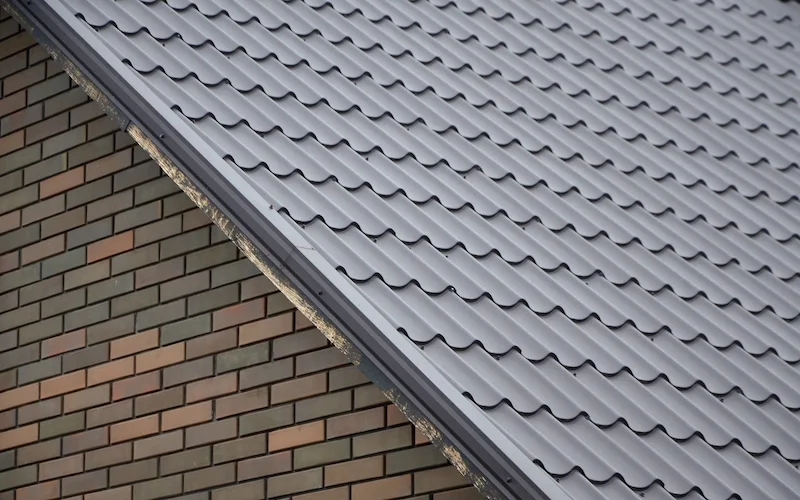Navigating Home Insurance Policy Exclusions
Understanding the exclusions in a home insurance policy is essential to making an informed decision and ensuring you choose the best protection for your needs, as coverage can differ from one plan to another.
The most common home insurance policy is HO-3, which broadly covers your home. As you review a standard HO-3 policy, knowing what’s excluded empowers you to better prepare your options and avoid unexpected expenses down the line.
Major HO-3 Exclusions
If you have a HO-3 policy, you can expect these exclusions:
Earthquakes and Other Land-Related Disasters
Home insurance policies usually exclude damage caused by earthquakes, landslides, or earth shifting. These events can cause severe structural damage, but because they are often region-specific risks, separate coverage is typically required. Homeowners in high-risk areas should consider purchasing specialized earthquake insurance to protect against this potentially devastating exclusion.
Flooding
Flooding from storms, overflowing rivers, or even snowmelt is not covered by standard home insurance. Since floods can cause widespread damage to both the structure and belongings, flood insurance is critical, especially in flood-prone areas. Without it, homeowners may face significant out-of-pocket expenses to repair or replace damaged property.
Sewers
Damage from sewer backups or drain overflows is typically excluded from standard policies. Since this type of damage can lead to costly repairs, homeowners may want to consider an add-on or endorsement for sewer and drain coverage, particularly if their home is in an area prone to plumbing or drainage issues.
Pest Infestations
Damage from termites, rodents, or other pests is not covered under HO-3 policies. Infestations are generally seen as a preventable maintenance issue, so insurance providers do not include them. Homeowners should conduct regular inspections and preventative treatments to avoid these types of damages, which can be extensive and expensive to fix.
Maintenance and Neglect
Wear and tear, lack of upkeep, or deferred maintenance that leads to damage is not covered. Insurance protects against sudden and unforeseen events, not issues arising from neglect. Regular home maintenance is essential to avoid unnecessary out-of-pocket costs for repairs that could have been prevented.
Degradation
Damage caused by long-term exposure to moisture, lack of ventilation, or improper maintenance leading to rust, mold, or corrosion is not covered. Since these problems often develop over time, homeowners are responsible for monitoring their homes and fixing issues early before they escalate into major problems.
Nuclear Hazards
Any damage or loss resulting from nuclear accidents or radiation is excluded. Although rare, nuclear incidents are considered catastrophic, and insurance providers exclude them from standard policies due to their magnitude. In such cases, compensation may be addressed by government programs rather than private insurance.
Government Involvement
Any damage caused by government actions, such as eminent domain, seizure, or demolition of property, is not covered. Homeowners should be aware of these limitations, though they may have some recourse through government compensation if their property is impacted by such actions.
Home-Based Businesses
If you operate a home-based business, any damages to business equipment, liability claims from clients, or losses due to business interruptions are not covered. Since home insurance is intended for personal property and activities, you’ll need a separate business endorsement or a commercial insurance policy to protect against risks associated with running a business from home.
Liability from Aggressive Pets
Injuries or damage caused by certain aggressive dog breeds or other dangerous pets may be excluded from liability coverage. Homeowners should check their policies to understand whether their pets are included, as they may need to purchase additional liability coverage or ensure their pets are not considered a risk.
Addressing Exclusions with Endorsements
By understanding these exclusions, you can identify potential gaps in your coverage that may leave you financially exposed. Fortunately, you can fill these gaps by adding endorsements to your policy, ensuring better protection against specific risks.
Endorsements are additional coverages that you can include in your home insurance policy. These optional add-ons help protect against events and damages not covered by standard policies, giving homeowners extra peace of mind.
Here are some endorsements and their costs to consider:
- Earthquake Insurance Endorsement: Average cost: $100 to $800 annually.
- Flood Insurance Endorsement: Average cost: $700 to $1,200 annually.
- Sewer Backup Endorsement: Average cost: $40 to $250 annually.
- Pest Infestation Endorsement: Average cost: $25 to $50 annually.
- Maintenance and Neglect Endorsement (Limited): Average cost: $50 to $150 annually.
- Mold, Rust, and Corrosion Endorsement: Average cost: $50 to $200 annually.
- Government Action Endorsement: Average cost: $20 to $50 annually.
- Home-Based Business Endorsement: Average cost: $100 to $500 annually.
- Aggressive Pet Liability Endorsement: Average cost: $50 to $200 annually.
Conclusion
Understanding what your home insurance doesn’t cover is key to avoiding unexpected costs. Knowing these exclusions helps you make informed decisions and choose any extra coverage your home might need. Taking the time to review and fill in those gaps ensures your home is well-protected and that you're prepared for whatever situations may arise.






